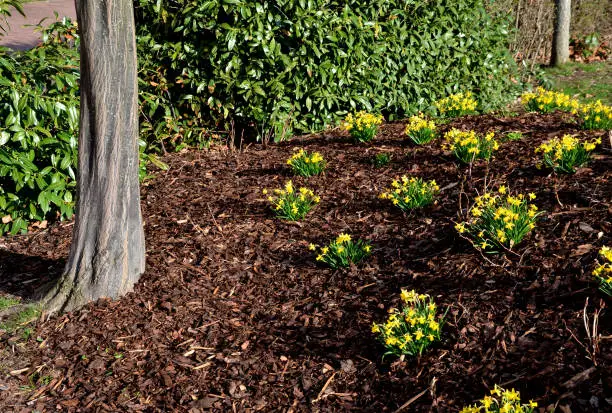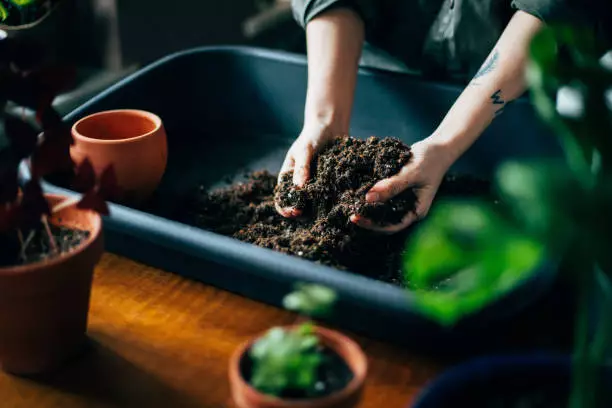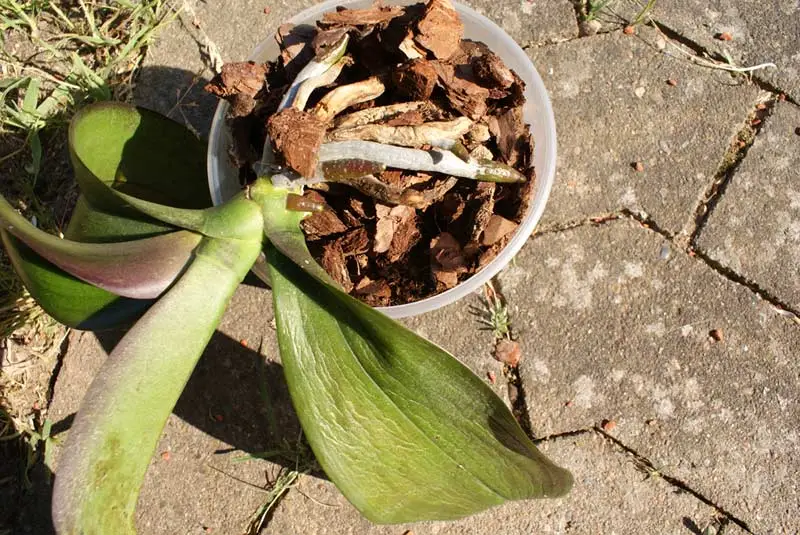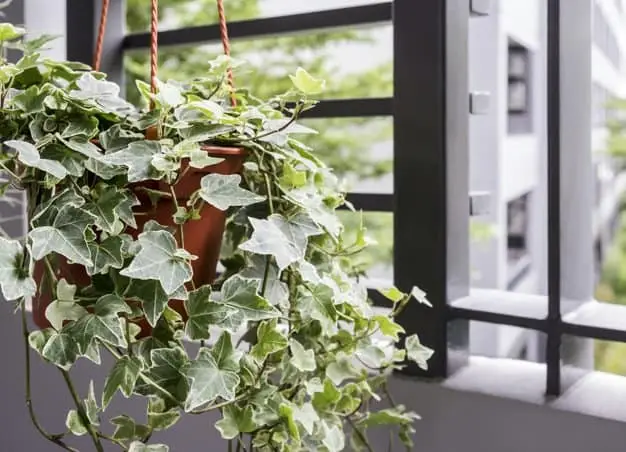Although snake plants (Sansevieria) are hardy green plants, they are quite sensitive to soil moisture problems. Overwatering your snake plant can cause signs similar to those of root rot and other problems. So, what are the specific signs and how do you save an overwatered snake plant?
An overwatered snake plant will show signs including drooping, leaves turning yellow, and falling over easily. Remove the plant from its pot, cut off any rotting roots, and repot it using a fresh potting mix to save the snake plant from dying. Place the plant where there’s bright indirect light.
Sansevieria plants are prone to overwatering which often causes undesired signs that start to appear on the leaves. This guide will help you tell when your snake plant is overwatered, and how to prevent and save the plant from dying due to waterlogging.
Signs of overwatering in snake plants
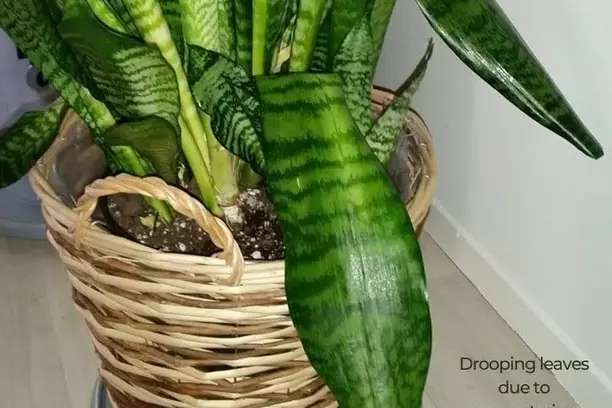
You can tell your snake plant is waterlogged by looking at the leaves. When overwatered, a snake plant’s leaves become heavy, squishy, and limp. They might also occasionally fall over. You can also test for wetness by pushing your index finger through the soil to check for excess water.
Here are the signs of an overwatered snake plant:
Soft, mushy or squishy leaves
When snake plant leaves take in excess water, there is significant damage to the leaf cell structure. Leaves eventually burst due to excessive water intake. Sansevieria leaves become soft, mushy, and squishy when the plant is overwatered.
A healthy snake plant has rigid green leaves that stand upright from the plant’s base. The leaves function as water storage surfaces by holding water that has been absorbed from the soil within the inner surface of the leaf.
Rotting roots and smelly soil
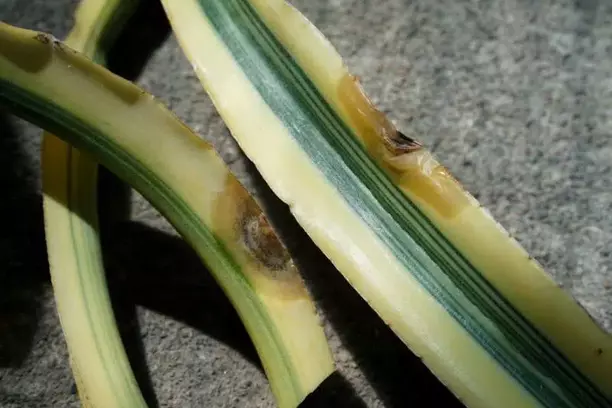
Root rot is a dangerous condition caused by fungi and bacterial infestation on your plant’s roots. A major cause of root rot is overwatering, where the soil remains in a damp state over extended periods. Wet soils provide a suitable environment for fungus, bacteria, and worms, which destroy the roots of the plants, causing them to wilt and eventually dry out.
You can quickly tell if your plant is suffering from root rot by smelling the soil. Place a smidgen of the earth close to the plant’s base into your nostrils. A smelly soil sample is a sign of fungi that results from dampness.
This is also a sign that you need to check the roots for further signs of root rot.
A healthy snake plant has crusty white roots. If you notice sections of the roots turning brown (or black), it could be that your plant is suffering from root rot. It’s best to remove the affected roots, wash the plant with water, and transplant it to a new potting medium to save the snake plant from overwatering.
Drooping leaves
Drooping leaves are a clear indication that there’s a problem with your snake plant. Although underwatering and nutrient deficiency can also cause your plant’s leaves to droop, the most common reason for a drooping snake plant is too much water.
RELATED: WHAT ARE THE SNAKE PLANT PROBLEMS AND DISADVANTAGES
If you notice your snake plant leaves drooping, start by checking the soil:
- Wet soil indicates that you have been overwatering your plant (which might also be the reason why your leaves are drooping).
- If the soil is dry, you can evaluate additional factors such as the temperature, potting medium, stress, or even underwatering in snake plants.
Note that drooping snake plant leaves can also mean the plant is suffering from root rot, so you might want to check the root zone and treat root rot to save the plant.
The snake plant falling over
It’s perfectly normal for one or two snake plant leaves to fall over. However, if you notice numerous leaves falling over within a short period, it could be a sign you’ve overwatered your snake plant.
Snake plants store water in their leaves, so, an excess intake of water causes stress to the base of the leaves, causing them to lean and fall over.
Leaves turning yellow
A healthy snake plant’s leaves are green with variations within different species and varieties. Yellowing sansevieria leaves is a sign of ill-health caused by overwatering, environmental stress, inadequate sunlight, excess fertilizer, etc.
Leaves turn yellow because waterlogged roots are suffocating and unable to absorb nutrients, water, and oxygen to keep the plant healthy. Prolonged water stress can also cause brown spots and tips on snake plant leaves.
Can a snake plant recover from overwatering?
Snake plants can recover from overwatering if you treat and save the plant early enough. When left to sit in waterlogged soil for long, plants can develop severe root rot – a fungal disease that can kill the plant easily.
You can start saving the plant by stopping the watering first and moving it to a sunny space. It is also important to remember that excess light can cause additional problems to your plant, so, opt for a low to medium light intensity location, preferably close to a window and allow the excess water to dry off.
How to save overwatered snake plant
You can save an overwatered snake plant by reducing the amount of water that the plant receives per week. Stop watering the plant until the soil dries out completely. A primary consequence of overwatering includes leaching and root rot.
Here’s what to do to save your overwatered snake plant:
1. Move the snake plant to a sunny spot
Since the leaves are droopy due to excess water, place the plant in a sunny spot to help it lose as much moisture as possible. Be careful not to leave the plant in excess sunlight for too long as this can worsen its stress.
2. Remove it from the pot
Gently tap the sides of the pot to loosen up the soil and make it easy to remove the plant from the pot. Once the soil is loose enough, gently pull your snake plant from the pot to expose the roots.
3. Treat root rot
Check the roots and identify those that have signs of root rot fungal disease. Affected plants have slimy, smelly roots with brown patches inside the structure of the roots.
Here’s how to treat root rot:
- Wash off excess soil from the roots. It is crucial to expose the roots to provide you with an accurate estimate of how far the damage has gone.
- Prune all the affected toots making sure that only the healthy roots are left in place. There are chances that the rot might spread again if all the afflicted sources are not entirely removed.
- You can also rub fungicide on the root ball after pruning the sick roots to prevent future occurrences of the fungal disease.
Allow the roots to dry out for a few hours before transplanting them into a disinfected pot with a new potting medium.
4. Repot the snake plant with a new potting mix
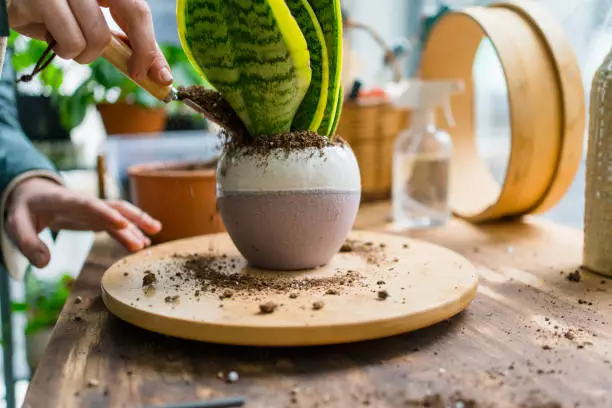
Prepare a new potting mix that’s well-draining and fill the pot with it. Replant the snake plant to save it from overwatering signs. Do not water it for a few days to prevent worsening the waterlogging signs.
5. Place the snake plant near a window
The last step to fix your overwatered snake plant is to place it in a spot where it receives bright indirect light. It can make a good east-facing window plant and can even tolerate some direct sunlight.
RELATED: WHAT ARE PLANTS THAT ARE BEST FOR EAST-FACING WINDOW
Water the plant lightly, allowing the top inch of the soil to dry between waterings. If you’re going away on holiday, do not overwater the plant. Instead, use other watering techniques such as water spikes to keep the plant hydrated for up to two weeks.
Treating severe root rot from overwatering
If left unchecked, root rot can spread extensively to other parts of the plant such as leaves and stems. The situation can be very stressful to the plant and might eventually cause wilting and drying up certain parts of the plant.
You can tell if the root rot has reached the leaves by observing their general health. There might be an imbalance between the plant’s food supply and the leaves’ nutrient requirement (or the leaves could be afflicted by root rot).
Here’s how to save your snake plant from severe root rot:
- Uproot the plant from the soil – It is pretty easy to uproot the plant from damp soil. If the rot has reached the leaves, it’s also highly likely that the potting medium will also produce a foul smell. You need to get rid of the infected surface and wash the critical areas affected by the rot.
- After the plant is clean, carefully trim the affected surfaces, including the roots and leaves. You can tell if a plant is infected by looking at how it forms from the base of the plant. You can also slice suspected leaves to check for brown markings inside the leaf structure.
- Transplant the snake plant in a new potting medium and pay attention to how it recovers over a few weeks.
- A snake plant is succulent and can survive extended periods without water. We recommend that you not water your plant for about a week while you monitor its recovery.
Is my snake plant dying from too much water?
Overwatering your snake plant can cause it to die off even though it’s not the water that kills the plant every time. The excess water encourages fungal and bacterial growth within the potting medium, which spreads to the roots of the plants, reducing its ability to take in water.
If the situation is neglected for a long time, the rot spreads to other parts of the plant, and the consequence is the eventual death of your snake plant.
Ways to Prevent Overwatering Sansevieria
You can prevent overwatering your snake plant by sticking to a strict watering routine. Snake plants require water only about once or twice a week, depending on the time of year.
- During the winter months, your plant can stay up to a month without needing additional water. However, if you see the snake plant’s leaves wrinkling, provide a little water to keep it hydrated.
- Ensure that you plant your snake plant in well-drained mediums. Some soils have a high water retention capability and are more prone to overwatering than others.
- Always ensure that your soil is dry before adding additional water to your plants.
- Avoid planting your snake plant in huge pots because, despite giving the plant room for growth, the extra space also increases the chances of overwatering and provides a suitable environment for fungi and bacteria, which can cause root rot and other complications.
RELATED: HOW TO SAVE SNAKE PLANT LEAVES FROM WRINKLING
Although the plants might require water, they only need minimal amounts. If you notice that your plant’s potting medium is constantly wet and damp, it is highly probable that you are overwatering your plant which might cause root rot and other diseases to the plant.
